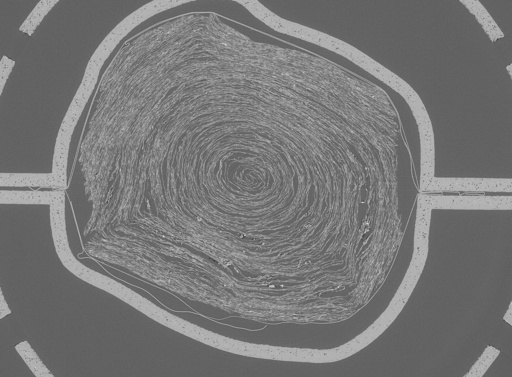
LONDON — Researchers are optimistic that a combination of artificial intelligence and human insight may prove instrumental in decoding ancient scrolls that were carbonized due to a volcanic eruption roughly 2,000 years ago.
In the mid-18th century, numerous papyrus scrolls were discovered in the remains of an opulent villa located in the Roman city of Herculaneum. This town, along with Pompeii, was buried under volcanic ash following the eruption of Mount Vesuvius in A.D. 79.
The library from the Villa of the Papyri holds significant promise for enhancing our understanding of ancient philosophies and knowledge, provided that these compact, candy bar-sized scrolls can be successfully interpreted.
While the blaze and volcanic debris froze the town and kept the scrolls preserved, they were rendered unreadable. Today, these ancient documents exist as brittle, charred blocks that would crumble if a physical attempt to unroll them were made.
For over 250 years, scholars and researchers have been attempting various methods to decode the scrolls, the bulk of which are stored in the National Library of Naples.
In 2023, a group of technology leaders sponsored an initiative called the “Vesuvius Challenge,” providing financial incentives for breakthroughs in utilizing machine learning, computer vision, and geometric analysis to interpret these ancient texts.
Recently, the challenge reported a “historic breakthrough,” revealing that researchers have succeeded in producing the first image of the interior of one of the three scrolls preserved at Oxford University’s Bodleian Library.
Brent Seales, a computer scientist from the University of Kentucky and a co-founder of the Vesuvius Challenge, expressed enthusiasm regarding the recent imaging success of the scroll, noting it contained more discernible text than any previously detected in Herculaneum scrolls.
The scroll was scanned at Diamond Light Source, a facility in Harwell, near Oxford, which utilizes a particle accelerator, called a synchrotron, that emits intense X-ray beams.
After acquiring the images, scientists employed AI to compile the data, identify ink patterns that signify areas of writing, and enhance the visibility of the text. This innovative process facilitated the creation of a 3D visualization of the scroll, enabling a virtual unrolling through a method known as segmentation.
However, AI currently has its limitations, as little of the text has been deciphered to date, with the ancient Greek word for “disgust” being one of the few legible terms identified.
Scholars are encouraged to contribute to the ongoing effort to fully decipher the text.
According to Peter Toth, the Cornelia Starks Curator of Greek Collections at the Bodleian, this is just the initial stage of what is anticipated to be a lengthy journey. He emphasized the need for better imaging techniques and expressed confidence that improvements in clarity and readability will be achievable.
Toth also expressed hopes that this technology could eventually be made available on-site, preventing the need to transport other vulnerable scrolls to the Diamond facility for scanning.
“There might be portable solutions,” he noted, “and let’s not forget that there are about 1,000 more scrolls waiting in Naples.”

